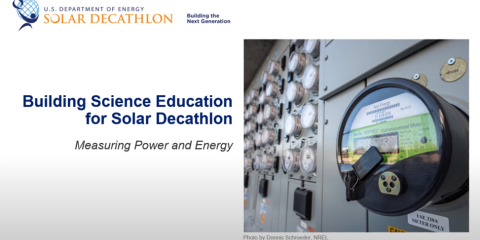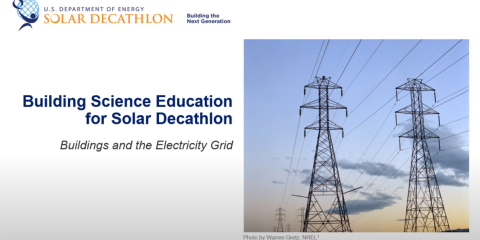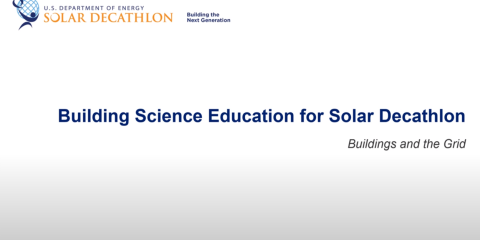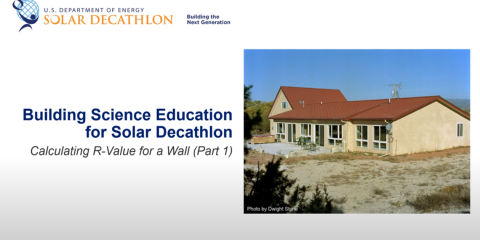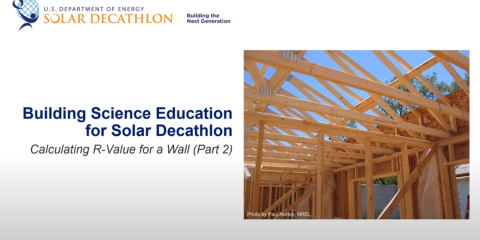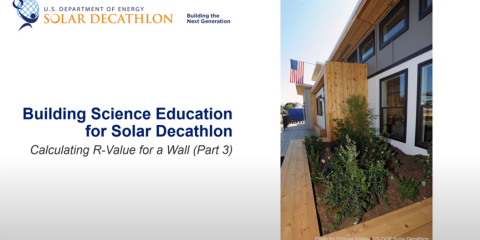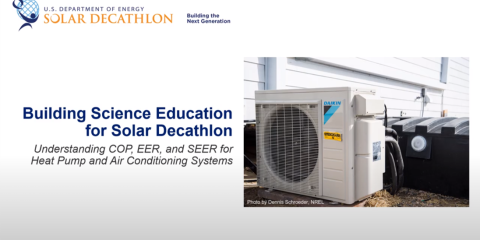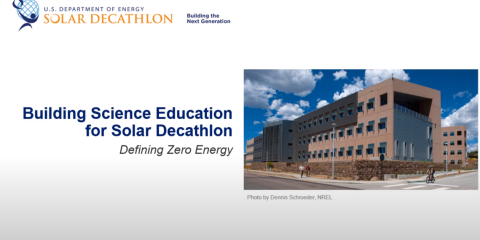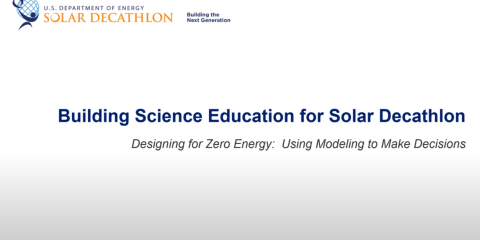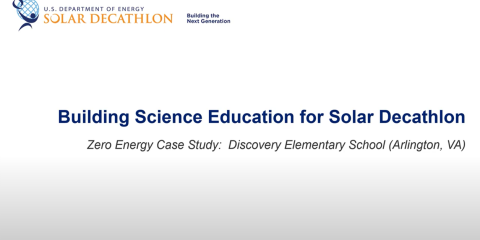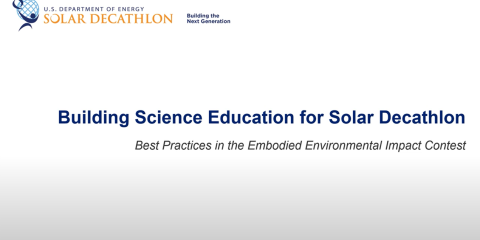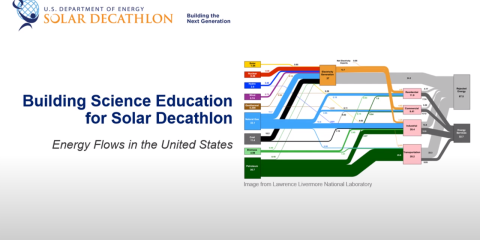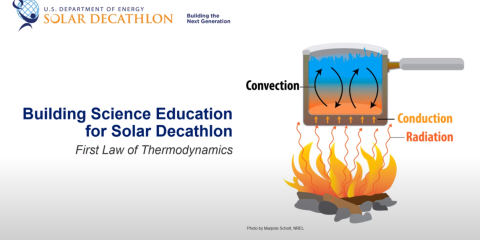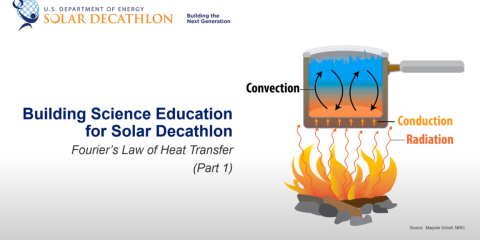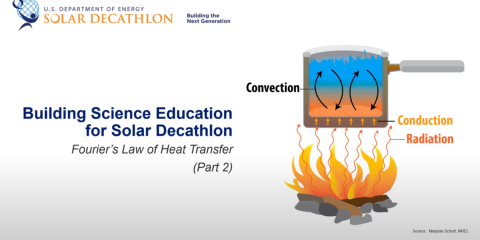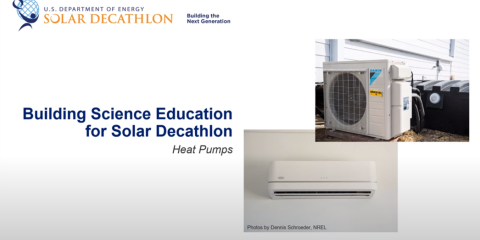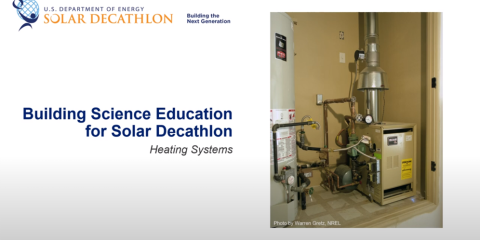In this video, the fundamental concepts of power and energy are described to provide a baseline understanding of these two important terms. Discussion includes dimensions, units, and example calculations associated with power and energy.
Resource Library
Showing results 361 - 380 of 476
This video discusses the impact buildings have on the electric grid, including how buildings have influenced the grid and challenges in the transition to a modern grid.
This webinar, originally presented by Dane Christensen as part of the 2019 Design Challenge, takes a deeper look at buildings and their interaction with the grid, and looks toward the future of the grid.
In this video, we will demonstrate how to calculate R-values for a simple wall construction.
In this video, we continue the demonstration of calculating R-values of a wall. Expanding on the simple calculation from part 1, this video dives into a more complicated example.
In this video, we continue calculating R-values for a wall, now using various types of insulation and other building techiniques to increase the R-value.
In this video, Dr. Nikitha Radhakrishnan, Research Engineer at the Pacific Northwest National Lab, discusses the basics of building controls and automation systems.
In this video, we continue the discussion of efficiency methods for heating and cooling systems and focus on defining terms used to measure efficiency of heat pumps and air conditioning systems.
This webinar, titled "Creating the Winning Team" was originally presented for the 2020 Design Challenge and discusses how to construct an effective team for the Solar Decathlon.
This video defines the concept of zero energy and dives into the ways a zero-energy goal can set you up for success.
This webinar was originally presented by Paul Torcellini and David Goldwasser for the 2019 Design Challenge. In this webinar, Paul and David discuss computer energy modeling and how it is used as a tool to make design decisions.
In this episode, we share a video developed by the US Department of Energy to showcase a zero energy elementary school in Arlington, Virginia.
This webinar was originally presented as part of the 2020 Design Challenge. In this webinar, Michael Young introduces the Embodied Environmental Impact Contest, lessons learned, and recommendations from the Solar Decathlon competition management team.
In this video, viewers will learn about the distribution of energy consumption in the US by discussing primary energy sources, analyzing a Sankey Diagram for Energy Consumption, and looking at recent trends in energy generation.
This video introduces the First Law of Thermodynamics and how it can be used to analyze how energy moves in and around buildings.
In this video, you will be introduced to the Law of Heat Transfer, or Fourier's Law, and the basic mechanisms of how heat flows. This video defines 3 distincts modes of heat transfer: conduction, convection, and radiation.
This video is part 2 of the discussion on Fourier's Law. In this video, we define "building envelope", explain how the 3 modes of heat transfer discussed in part 1 can be applied to building science, and introduce the concepts of U-value and R-value.
In this video, we cover heat pump technology and go into the details for how this system works to both heat and cool buildings.
This video explains heating systems, primarily for residential applications, with a focus on heat sources and distribution systems.
This video explains the importance of studying Building Science by looking at the impact buildings have on the overall energy consumption in the US.
